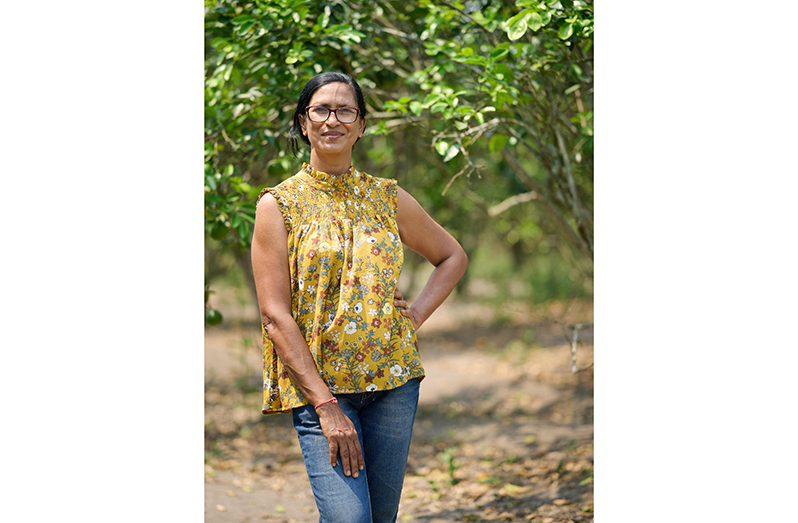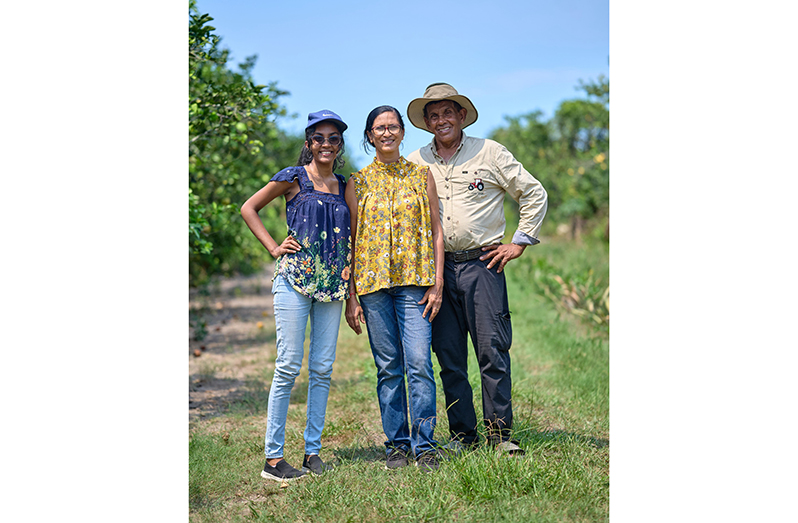IT is very easy to get lost in the captivating beauty of the Singh family’s farm on the West Bank of Demerara.
The 100-year-old farm is home to a variety of trees, some of which are older than the farm itself. Just a year ago, however, the Singhs embarked on an interesting journey to blend agriculture with the growing field of tourism. Now, just a year later, they have crafted a unique tourist destination. With 10 acres of fruit trees, greenery, and history, the farm has garnered attention from all around Guyana, giving visitors an authentic Guyanese tourism experience.
A legacy of agriculture and family
It may be easier to list what isn’t on the Singh family’s farm than what is—at least according to the farm’s owner, Jeyaram “Jai” Singh, who has been in agriculture all his life. Born and raised on the family farm, Jai has seen the once small plot of land blossom into a vast, diverse farm spanning more than a mile. “I am presently 64 years plus. I have been farming for over 60 years since I was young… I was born on this farm. My parents farmed this land,” he said.
Most farms are simply large farmlands with a few crops across hundreds of acres, but Singh’s farm aims for diversity. Over the years, it has become known as a place where people can visit, pick their own fruits, and have an authentic agricultural experience—an experience Jai says began with his grandparents. “My grandparents farmed this land. So, this farm has been in the Singh family for more than 100 years. We have four trees on this farm that are more than 100 years old,” he said. He added, “We have oranges, tangerines, grapefruit, mami, star apple, monkey apple, sedium, papaya, guavas, cashew, and much more. We also do cane juice.”

The farm has a cozy atmosphere—more than a farm, it is also the Singh family’s home. Over the years, Jai has dabbled in various agricultural endeavours. “I used to supply sugar cane to the real sugar factory, more than 500 tons per year. And since the closure of that sugar factory, we have moved on to processing cane juice,” he said. Now, the family has shifted gears, taking a tourism-based approach. As Jai explains, he and his wife are the duo that keeps the farm running. “I do the production, so I like to say I am the production manager. She does marketing, purchasing, procurement—everything else that makes this farm run,” he said.
Jai’s farm also emphasises the importance of organic foods. Although some crops have been grown with fertilisers, Jai tells visitors which are organic and which are not. A visit to the farm is educational, with Jai explaining everything visitors need to know about the numerous trees, always emphasising that some organic fruits may not be the prettiest. “We need organic food. We are trying to use as few chemicals as possible on this farm. And I tell visitors which crops are grown organically and which are not,” he said.
New to Agro-Tourism
The other half of the Singh farm is his wife and tour guide, Dhanwantie “Dianne” Singh. Although new to tourism, Dianne has plenty of experience in the sales aspect of agriculture. “I started going to the market to sell about 20 years ago. Before that, I used to assist my husband a little. Then I felt he was handling marketing and everything else,” she stated.
Groups of family and friends can visit the farm for a full day of exploration and fun, learning about the challenges and changes in agriculture while Dianne takes them on an adventure. “We used to take family and friends on farm tours. The feedback they gave us was that they enjoyed it so much. They felt they could pay for this tour because it made them feel so relaxed,” she said.
The farm has garnered great support from major tourism bodies as well as everyday Guyanese. Although the couple had fears about starting something so new later in life, Dianne says she is happy they took the leap and that she is now a trained tour guide. “The support they gave us was overwhelming. They checked it out, gave us advice, and I had to do the training with them as a tour guide and tour operator and get licensed,” she said.

People from around the world have visited the family farm. As Dianne shares, “We had guests from Germany, Australia, Africa, the United States, and Canada. They kept coming back for months.” Throughout the last year, Dianne and her husband have shown many newcomers what farm-to-table really means, showcasing the process from planting to the produce arriving in their homes. “We had people who didn’t know how pineapple or cassava is grown. They were very surprised,” she said.
Facing modern challenges
Like many farmers across Guyana and the world, the Singhs are facing challenges with increasingly unpredictable weather conditions. “As a farmer, you need a lot of patience and determination. Sometimes, it can be challenging when you can’t make that determination,” Dianne said. “Sometimes it rains, sometimes you have flooding or drought. Farmers have to deal with all that. And if they decide to give up because the crop didn’t come out well, it would be very discouraging,” she added.

The next generation
Despite the many challenges, the Singhs are determined to keep the farm in the family, finding new ways to get people interested in agriculture and its beauty and significance. “You have to keep planting, and you have to have faith and be positive that, yes, this crop didn’t turn out well, but the next one will. You have to have that determination,” Dianne said.
The Singh children have also taken an interest in agriculture, with the youngest, Devina Singh, developing a deep appreciation for the farm she grew up on and hoping to keep it running as she studies law. As her mother shared, “I have two sons and a daughter. From a young age, they started helping on the farm—watering the plants, picking produce. My youngest daughter, Devina, helps a lot on the farm and with visitors,” she said.
As the most recent generation of Singhs born on the farm, Devina is a passionate advocate for gettinnig young people involved in agriculture. “Growing up on a farm was not strange for me. I remember coming down to the farm with my mother and studying and reading in the trees,” she said. She added, “If you have a chance to visit a farm, you definitely should. It’s an amazing experience, and if you’ve eaten today, you should thank a farmer.”



.jpg)








